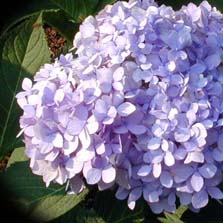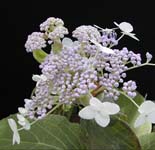The overall objective is to develop strategies for breeding new and improved woody ornamental germplasm adapted to the southeastern United States. I focus on understanding the genetic/genomic basis of host-plant resistance to diseases and insects and integrating that knowledge via molecular-based breeding programs. Primarily, I develop SSR markers for ornamental crops and establish breeding collaborations. Because relatively little genetic research is dedicated to improving ornamental crops, my work encompasses everything from classical genetics, genome sizing, mutation breeding, ploidy and ploidy manipulation, to molecular genetics, marker-assisted breeding, map-based cloning, and bioinformatics. I am also interested in genomics approaches to elucidate genes responsible for remontant flowering.
I serve as a technology resource at SHRL and have developed molecular tools for soil-borne pathogen detection, insect parasitoid identification and quantification, and DNA-based gut content analyses.
I have several ongoing molecular marker projects using microsatellites (SSR). For example, I am looking at the diversity within the Hydrangea genus to facilitate the generation and release of new cultivars using wide crosses.
 |
 |
 |
|
Hydrangea lobbii |
Hydrangea macrophyla |
Hydrangea involucrata |
I am also involved in crapemyrtle breeding at Poplarville. Our mapping populations are designed to produce markers for flea beetle resistance, powdery mildew resistance, and leaf spot resistance. This work should accelerate breeding of new cultivars and further molecular research on the mechanism behind pest and disease resistance.
Molecular markers have practical applications in current green industry practices. Cultivated woody ornamental plants are often bred by amateur enthusiast with little or no records, and are often selected based on unusual morphological traits making pedigrees difficult to establish using traditional biosystematics studies. Excluding marker development, the cost of analyzing samples using modern DNA-based technology is relatively inexpensive and has the potential to unambiguously answer genetic questions. The goal of this research is to provide DNA-based tools for researchers, breeders and nursery professionals to answer questions about mislabeled plants in the industry, confirm parentage of hybrids from open-pollinated selections, verify hybrids, resolve true-to-name disputes, and support plant patent protection of select cultivars. Morphology-based assessments of pedigree or relatedness are prone to error and once mislabeled or lost from trade, it is difficult to reestablish a cultivar based solely on botanical descriptions.
In order to encourage use of the SSR loci I have developed, the SSR loci, primer design, DNA sequences, and datasets are available for public use. An excel file for Hydrangea and a file for Lagerstroemia are linked here.
|